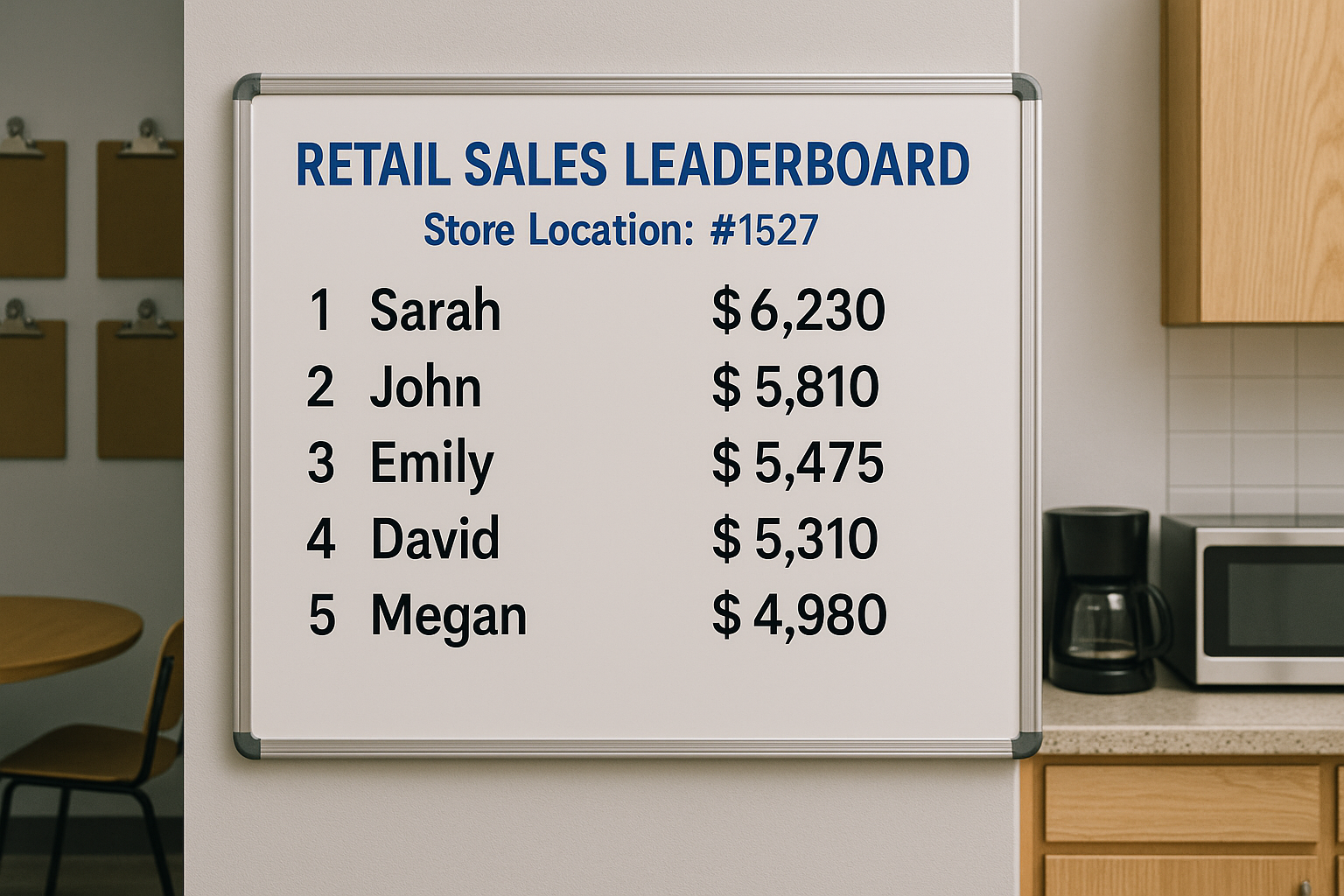
The retail environment is famously fast-paced and dynamic—frontline employees juggle customer service, inventory management, and upselling in real time, often with minimal downtime. In such a hectic setting, Sales Performance Incentive Funds (SPIFFs) can provide a welcome boost of motivation and recognition. However, designing SPIFFs for retail requires a nuanced approach: from simple reward structures to immediate gratification.
In this blog, we’ll explore how retail SPIFF programs can empower frontline teams, increase sales, and elevate customer satisfaction. For an overarching view of SPIFF design, check out our: “The Ultimate Guide to SPIFF Programs: Boosting Sales Performance”.
Why SPIFFs Work in Retail
High Turnover Rates
Retail commonly sees high employee turnover, making it difficult to maintain institutional knowledge. SPIFFs that reward consistent performance or quick onboarding success can help stabilize the workforce.
Immediate Results
Retail sales happen in real time—one purchase at a time. Short-term incentives (like SPIFFs) are perfectly suited to nudge employees to upsell, cross-sell, or promote special items.
Seasonal Fluctuations
From holiday peaks to off-season lulls, retail sales can vary drastically. A well-timed SPIFF can tackle slow months or capitalize on high-traffic periods (e.g., Black Friday, back-to-school season).
Goals & Focus Areas for Retail SPIFFs

Increasing Average Transaction Value (ATV)
One of the simplest ways to measure upselling success is to track ATV. A SPIFF that rewards every successful upsell—like adding footwear care products for shoe purchases—can incrementally boost daily revenue.
Promoting New or Seasonal Products
When launching a new clothing line or introducing seasonal offerings, a short-term SPIFF can spotlight these products, incentivizing frontline staff to mention them to every customer.
Enhancing Customer Experience
Customer service metrics—like feedback scores or membership sign-ups—can also be tied into SPIFFs. For instance, staff might earn points for inviting shoppers to join a loyalty program or leaving positive feedback on a post-purchase survey.
Examples of Retail SPIFF Programs

“Add-On Item” Incentive
- Objective: Increase add-on sales (e.g., accessories, warranties).
- Mechanics: Each successful add-on sale above $10 in value earns a “star.” After five stars in a week, employees get a $25 digital gift card.
- Immediate Visibility: A leaderboard in the break room shows star counts daily.
Team-Based “Perfect Score” Challenge
- Objective: Improve customer satisfaction or mystery shopper scores.
- Mechanics: Each store location that achieves a set average feedback score (e.g., 4.5+ out of 5) for the month shares a bonus pool.
- Result: Fosters collaboration, with team members coaching each other on best practices.
Seasonal Sales Push
- Objective: Move a specific product line during a limited season (e.g., holiday gift sets).
- Mechanics: Every staff member who sells at least 5 units of the seasonal line by the end of the shift gets a scratch-off card for an instant reward (ranging from $5 gift cards to bigger prizes).
- Excitement Factor: The element of surprise keeps morale high throughout the campaign.
For more inspiration, see “How to Create a High-Impact SPIFF Program for Your Sales Team”.
Best Practices for Retail SPIFF Execution

Keep It Simple
Frontline retail employees have limited time to digest complex rules. Ensure your SPIFF mechanics and reward structures can be explained in a one-minute briefing.
Offer Immediate Rewards
Delayed gratification might not resonate in a fast-moving retail setting. Digital gift codes or instant recognition (like awarding “stars”) can keep staff motivated in the moment.
Use Visuals & Leaderboards
Whether it’s a chalkboard behind the register or a digital dashboard in the break room, real-time standings encourage friendly competition. Engaged employees are more likely to push for that extra upsell.
Overcoming Common Challenges
Avoiding Burnout
- Issue: Employees might feel pressured if too many SPIFFs stack up.
- Solution: Space out promotions; consider short “sprints” followed by cooldown periods.
Ensuring Fairness
- Issue: Some shifts or store locations might see heavier foot traffic, skewing the results.
- Solution: Offer tiered goals based on shift patterns or store size, or run separate SPIFFs for different store categories.
Managing Costs
- Issue: Overly generous rewards can eat into margins, especially if your store sees high participation.
- Solution: Base budgets on anticipated sales lift. For guidance, check out “SPIFF Program Budgeting: How to Maximize ROI”.
Tracking and Measuring Success
- Sales Metrics: Compare daily or weekly revenue, average transaction value, and item-specific sales to baseline data.
- Employee Engagement: Monitor how many employees actually participate, and gather feedback.
- Customer Satisfaction: Use store-level Net Promoter Scores (NPS), mystery shopper ratings, or social media reviews to gauge improved experiences.
For more on robust data approaches, see “Using Analytics to Optimize SPIFF Program Performance”.
Conclusion
Retail SPIFF programs capitalize on frontline momentum. By structuring short, engaging challenges and offering immediate, tangible rewards, you can elevate staff enthusiasm, boost daily sales, and enrich customer experiences. Keep SPIFF rules simple, track results diligently, and rotate programs in a way that keeps your frontline team motivated—without risking burnout.
Looking for a more comprehensive breakdown of SPIFF design? Let’s Make Your SPIFF Program a Success. Schedule a Free Demo Now!
